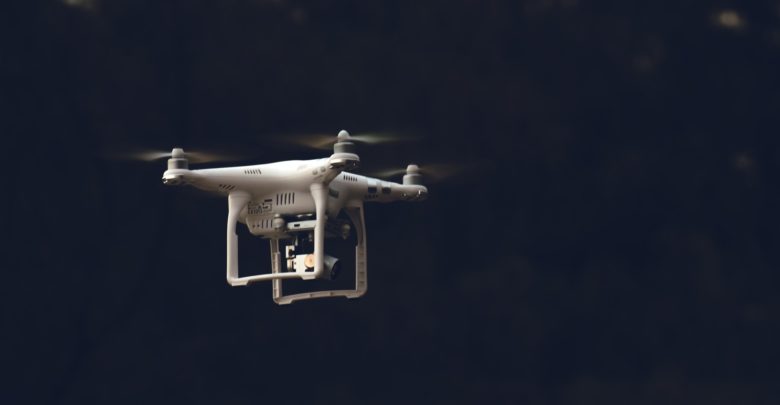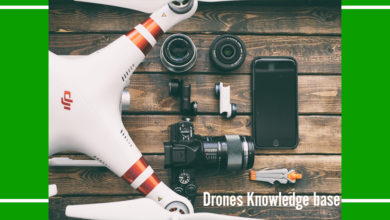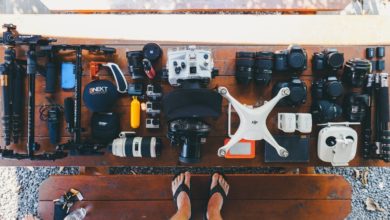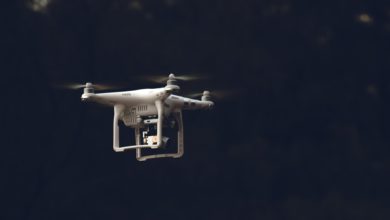
Drones Knowledge base
The History, Present and Future of Aerial Photography in India and The Rest of The World
Aerial Photography refers to capturing shots with the help of an airborne camera. A sea change has been witnessed in the field of Aerial Photography during the course of over 14 decades of its glorious history. Back in 1858, a French photographer named Gaspard-Félix Tournachon, for the very first time, succeeded in carrying out a session of Aerial Photography with the help of a hot air balloon tethered at the height of 80 meters. Unfortunately, none of those priceless shots has survived to this day. Two years later, in 1860, Samuel Archer King and Wallace Black captured Boston from a height of 630 meters. Fortunately, this aerial photo has survived, and it now goes by the name of Boston, as the Eagle and the Wild Goose See It.
Initially, Aerial Photography was carried out with the help of pigeons, kites rockets and balloons. In 1897, Alfred Nobel became the first human being in the world to succeed in capturing an aerial photo with the help of a rocket-mounted camera. Nine years later, in 1906, George Lawrence captured San Francisco before and after the infamous earthquake. Lawrence succeeded in carrying out this session of Aerial Photography with the help of a 49-pound camera mounted to the height of 2000 feet with the help of a train of as many as nine kites. L.P. Bonvillan, in 1908, captured the very first aerial photo from an airplane. During the first World War, detailed maps were prepared with the help of Aerial Photography.
Fortunately, the professionals did not take a long time in making pigeons obsolete in this regard, but the use of kites and balloons for mounting the camera to the desired height continued, and a few professionals still use it for the same purpose. However, manned planes and drones, these days, are the most popular carriers of aerial cameras.
Drones are preferred by most of the professionals over their manned counterparts owing to the ability of the former to capture equally good shots without involving a whopping amount of money.
The lighting conditions in the area that needs to be captured with the help of a drone should be perfect. In this context, ‘perfect’ refers to reasonable light. Contrary to popular belief, too much of sunshine isn’t healthy for drone photography. According to most of the professionals, the best time for carrying out Drone Photography is just before the sunset. The quality of the concerned lens should be superlative since it invariably plays a vital role in deciding the fate of each and every aerial shot. It is highly recommended to refrain from using drones for photography on days when it’s raining, snowing or windy out there no matter how advanced the concerned drone may be since the results will, almost always, be disappointing.
Drones are popular not only popular because of the reasonable cost involved with them but also because of their versatility. The duration for which a drone can stay airborne varies from model to model, and a drone either comes bundled with or without a built-in camera. So, coming across a drone that fits the bill no matter how specific the need may be is always easy.
The use of gimbals in drone photography is recommended since they enable the drone-mounted camera to capture stable footage. These days, there is no dearth of drones that can capture footage in 4K and this is one of the reasons why the concerned shots are detailed in nature.
These days, filmmakers in all parts of the world have started to use drones for capturing stunning footage that looks great on the big screen. So, the reliance on land-based cameras has now started to witness a decline in filmmaking that isn’t drastic, but reasonable won’t be an inappropriate word to use for the same. Such a decline is also being witnessed in many other fields.
One of the most important applications of Aerial Photography is in the field of Disaster Management. Drones can easily capture clear footage of any area that is difficult to access via foot. The same drones also facilitate the rescue operations by capturing the areas that are severely hit by natural disasters like earthquake and flood. Drones, these days, are also being used for monitoring the construction of any illegal structure to ensure that they can be demolished as soon as possible.
Most of the builders in all parts of the world have started to use drones for coming across the most conducive sites for carrying out the intended construction.
For carrying out Aerial Photography in any part of the world, you need to comply with the guidelines laid down by the concerned authority and India is no exception to this fact.
The most important guidelines laid down by the Directorate General of Civil Aviation for carrying out Aerial Photography in India are as follows:
1: A drone flying in India needs to stay in the Visual Line of Sight.
2: Drones in India are prohibited from flying in controlled airspace.
3: It is mandatory for all the operators in India who want to fly a drone at/above 200 feet above ground level in the uncontrolled airspace to have an Unmanned Aircraft Operator Permit issued by DGCA.
4: A drone flying in India should have a Unique Identification Number issued by DGCA.
Visit the official website of the Directorate General of Civil Aviation to make yourself aware of all the concerned guidelines in detail.
For carrying out Aerial Photography in Australia, the operators need to have a certificate as well as a license issued by the Civil Aviation Safety Authority. In Australia, drones that weigh under 2 kilogramme can be used for commercial reasons.
In the United States of America, the Federal Aviation Administration only allows the operators who are licensed pilots to fly a drone. The operators should always keep the drone in the Visual Line of sight and ensure that everyone in America stays unharmed with such operations. Visit the official website of the Federal Aviation Administration to acquire the awareness of the detailed guidelines.
The United Kingdom is considering to come up with reasonable laws for the individuals who wish to carry out Aerial Photography, but as of now, there are just a few guidelines that need to be complied with for carrying out the same. Currently, anyone in the UK can buy and fly a drone that weighs less than 20 Kilogramme. The drone should always be in the Visual Line of Sight that refers to the height of 400 meters. For flying a drone beyond the 400-metre mark, the operators need to have the formal permission from the Civil Aviation Authority. The drone should maintain a distance of at least 150 meters from any area that is flooded with people. A drone in the UK can’t be used for commercial purposes. Visit the official website of the Civil Aviation Authority to know about all the guidelines in detail.
In Ireland, the operators need to register all the drones weighing over 1 Kg with the Irish Aviation Authority. While flying, all the drones in Ireland should always maintain a distance of at least 5 Kilometres from each and every aerodrome. A drone is prohibited from flying in a civil airspace or an airspace controlled by the military. Visit the official website of the Irish Aviation Authority to know about all the guidelines in detail.
In India, Aerial Photography doesn’t date back to many years in the past, and therefore, it isn’t as popular as it is in a few other parts of the world, but the awareness of this acclaimed method of capturing shots is now spreading at a gradual pace. A considerable number of Indians have now realised that Aerial Photography is better than its land-based counterpart in many ways and this is the reason why they are now more interested in the former than the latter.
Aerial Photography is playing an important role in the growth of India’s tourism sector by tempting millions of people across the globe to pay a visit to a large number of monuments, shrines and many other tourist destinations in India at least once. The growth of India’s real estate sector also owes a lot to the impressive shots captured through drone-mounted cameras since they have proved to be successful in encouraging the potential buyers towards the piece of land that has been put on sale.
An impressive number of business houses across India have now started to use the aerial footage for advertising their products and services, and they are happy with the results.
Aerial Photography in India is expected to witness a surge in the number of takers in the future because the number of service providers in the concerned field is increasing and consequently, the cost of availing Aerial Photography services is expected to come down to the point when most of the Indians will call it affordable. Currently, despite being interested, a lot of Indians can’t afford to opt for Aerial Photography.
Now: You might be wondering what to look for when choosing your drone. It’s easy: Right here, you will find the most important specs to look for. We’ve also included a drones knowledge base so that you can quickly learn the drones basics. Bada bing, bada boom — you’re almost ready for takeoff!



